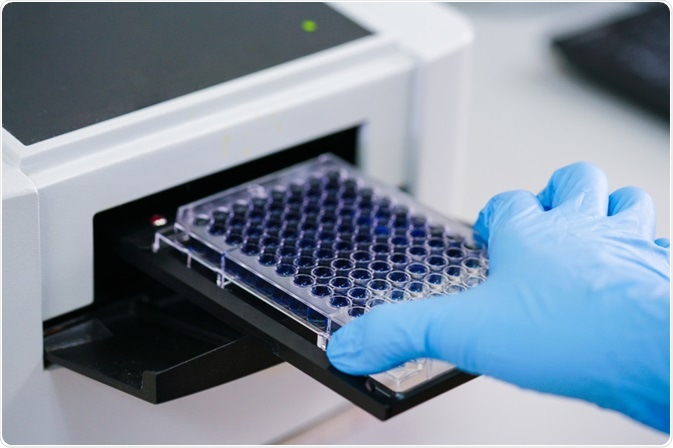Detection of COVID-19 Virus : Serology Testing
Serology testing is a way forward : ELISA

Have you ever thought what will happen if there is shortage of equipment to detect patients with Covid-19 using the RT-PCR method?

As the 2019 coronavirus disease (COVID-19) pandemic continues to spread around the world, the need for more testing become considerably indispensable. Current test called Real Time Rt-PCR has been the working standard in diagnosis. Nevertheless, this technique is relatively expensive and depends on the availability of equipment and expertise.
In United States, Center for Disease Control and Prevention (CDC) has developed a laboratory test to facilitate in detecting patients infected with the coronavirus. Clinicians and researchers called it as serology test or antibody test. This test include lateral flow assay, enzyme-linked immunosorbent assay (ELISA).
Accurate interpretation of serology test rely on antigen specificity and the type of antibody being detected. The test looks for the presence of antibodies such as IgM and IgG that target the spike glycoprotein (S) and nucleocapsid phosphoprotein (N) of SARS-CoV-2. Although the PCR assays are generally more sensitive, ELISA is less expensive and easier to conduct according to the experiment done in Wuhan Jinyintan Hospital, Wuhan, China.
What are the methods?
ELISA method for detection of COVID-19
First of all, the health worker will take blood samples test from the suspected patients. For IgM captured by ELISA, 5 µL blood samples were diluted in 500 µL sample diluent. The 100 µL were added to duplicate well of microlay-tes which were coated with mouse anti-human IgM monoclonal antibody and incubated for 60 minutes at 37℃ ± 1℃. Plates were then washed five times and reacted with 100 µL enzyme marker (enzyme-labeled antibody-linked antigen) for 30 minutes at 37℃±1℃ for the purpose of detecting IgM against new coronavirus in serum samples. Next, for IgG captured by ELISA, 5 µL serum samples diluted in 100 µL sample siluent were added to duplicate wells of microplates which were coated with recombinant antigen of new coronavirus and incubated for 60 minutes at 37℃ ±1℃. Plates were then washed five times and reacted with 100 µL enzyme marker (HRP-conjugated monoclonal mouse anti-human IgG) for 30 minutes at 37℃±1℃ for the pur[ose of detecting IgG against new coronavirus in serum samples. Both plates were then washed five times and 50 µL substrate buffer and 50 µL tetramethylbenzidine (TMB) substrate solution were added well for a chromogenic reaction for 15 minutes at 37℃±1℃. The colour reaction was stopped by the addition of 50 µL of 2 M H₂SO₄ to each plates. Finally the OD450 was measured and recorded immediately using an Infinite 200 PRO microplatereader.
Conclusion
To conclude, serology test comparatively easier to perform, requiring less technical expertise and equipment compared to the RT-PCR method for detection COVID-19. ELISA for specific IgM and IgG antibodies can be described as conventional serological assays. They can offer a high-throughput alternative, which allows uniform test for all suspected patients and can facilitate more complete identification of infected cases and avoidance of unnecessary cross infection among unselected patients.
Besides, they use plasma or blood sample which can be collected easily. It also greatly reduce the potential risk of infection to the staff handling the samples. Although ELISA is simple, fast and safe method, cases confirmation still depended on RT-PCR as their utility may be limited by the performance issues of rapid tests in general, and the fact that antibodies appear later during the disease course.
For better understanding, you can watch a video down here.
However, this serology test, ELISA method still can be used for rapid identification of patients with COVID-19 and facilitate the current technique.
You may refer to these supported journals included here:-
#TOGETHERWEFIGHT!
#STAYHOMESAVESLIVES!
Comments
Post a Comment